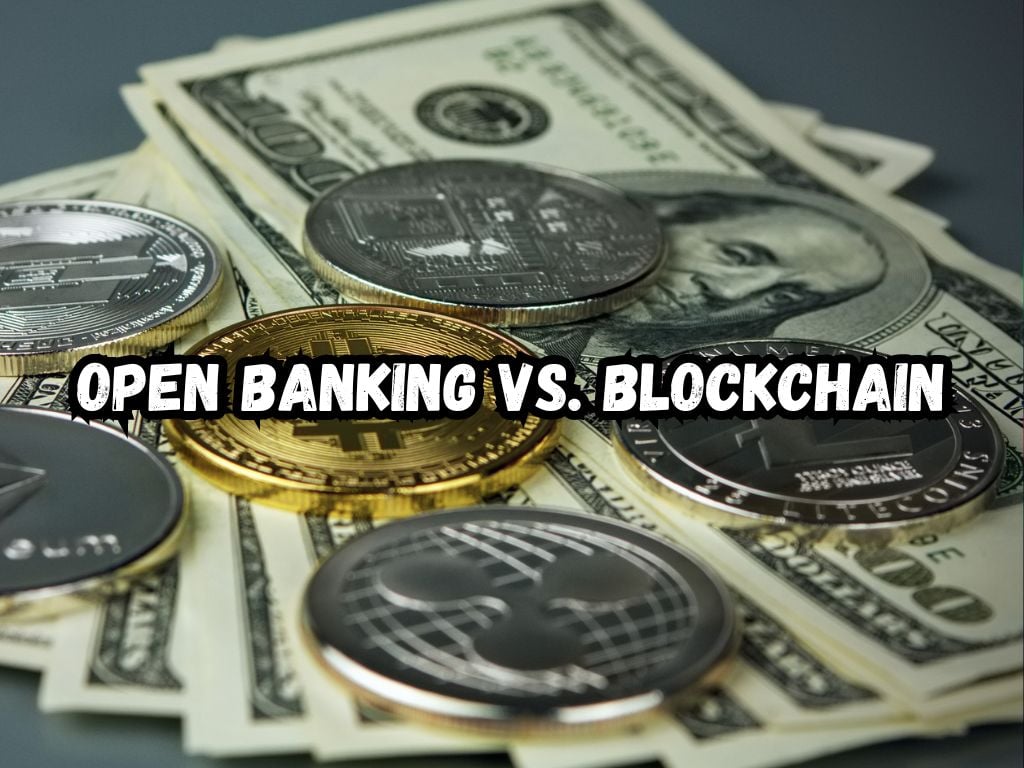The digital revolution has drastically reshaped the landscape of financial services, introducing transformative technologies that redefine how institutions operate and interact with customers.
Among these, Open Banking and Blockchain stand out as two significant innovations. While they follow different principles and frameworks, both aim to increase efficiency and transparency in financial services.
This article delates into the definitions, applications, and future potential of Open Banking and Blockchain, highlighting open banking vs blockchain differences and evaluating their impact on the finance industry.
Understanding Open Banking
Definition and Concept
Open Banking is a banking practice that provides third-party financial service providers open access to consumer banking, transaction, and other financial data from banks and non-bank financial institutions via application programming interfaces (APIs).
It encourages a network where parties can interact and share information more freely to improve the services offered to consumers.

Key Features of Open Banking
At its core, Open Banking is designed to create a more interconnected financial environment.
Through APIs, it enables developers to build applications and services around the financial institution, increasing competition and innovation, all while providing consumers with more options to manage and utilize their finances effectively.
Pros of Open Publishing
Open Banking simplifies financial management for consumers by offering them a consolidated view of their finances. This system fosters innovation, enabling new apps and services that offer tailored financial advice, easier lending, and more efficient payment services.
Moreover, it encourages competition, eventually leading to better consumer rates and services.
Cons of Open Publishing
The main concerns regarding Open Banking center around data security. Sharing consumer data between institutions and third-party providers increases the potential for data breaches.
Furthermore, the varying levels of security across platforms can pose additional risks.
There’s also the challenge of ensuring all parties comply with stringent regulatory requirements.
Understanding Blockchain
Definition and Concept
Blockchain is a distributed ledger technology that maintains a permanent, tamper-proof record of transaction data. Unlike traditional banking systems, Blockchain operates on a decentralized network that makes it exceptionally secure and transparent.
Key Features of Blockchain in Financial Services
Blockchain supports features such as smart contracts, tokens, and cryptocurrencies that can revolutionize financial services. Smart contracts can automate the execution of contracts with conditions met by both parties, while tokens represent a variety of assets and rights held by investors.
Pros of Blockchain
The primary advantage of Blockchain is its enhanced security. The decentralized nature significantly reduces single points of failure and associated risks of corruption or financial fraud.
Transactions on a blockchain are not only secure but also much quicker and cheaper compared to traditional banking systems.
Cons of Blockchain
Despite its advantages, Blockchain faces issues like scalability; its current capacity to process transactions is limited compared to established payment networks.
Regulatory uncertainty also looms large, with differing laws across jurisdictions posing significant challenges.
Additionally, the energy consumption related to Blockchain, especially Bitcoin mining, raises environmental concerns.
Open Banking Vs Blockchain: A Comparative Analysis
Differences in Technology Framework
Open Banking operates on a centralized system where the data exchange happens through APIs.
In contrast, Blockchain is fundamentally decentralized, removing the need for intermediaries in transactions.
Application in Financial Services
Open Banking has markedly improved data sharing between entities which enhances user experience and service offerings.
Conversely, Blockchain offers a robust solution for direct transactions that enhance transparency and reduce fraud.
Impact on Financial Industry
Open Banking primarily enhances traditional banking functionalities, providing users with better service offerings.
Blockchain, meanwhile, could potentially redefine financial transactions and record-keeping.
Future Prospects and Challenges
Looking ahead, Open Banking might integrate more deeply with technologies like AI to predict user preferences and offer personalized financial advice.
Blockchain could expand its footprint beyond digital currencies into mainstream finance, provided it overcomes its scalability and regulatory challenges.

Pro Tips for Financial Institutions
Financial institutions should leverage both Open Banking and Blockchain to stay competitive. Prioritizing security in these digital transformations is crucial.
Staying abreast of regulatory updates is equally important, as is safeguarding consumer data to maintain trust and compliance.
Key Notes
The integration of Open Banking and Blockchain is fostering a more open, efficient, and transparent financial ecosystem.
Their evolution highlights the importance of adapting to technological changes while ensuring consumer protections and regulatory compliance remain top priorities.
Frequently Asked Questions
What are the main differences between Open Banking and Blockchain?
Open Banking relies on central networks and APIs, while Blockchain is built on a decentralized and secure ledger.
How can consumers benefit from Open Banking and Blockchain?
Consumers can enjoy more personalized financial services with Open Banking and more secure, transparent transactions with Blockchain.
What are the potential risks associated with Open Banking and Blockchain?
Data privacy issues plague Open Banking, whereas Blockchain faces scalability and regulatory challenges.
How do regulatory standards affect Open Banking and Blockchain?
Regulations define the scope of operations and ensure security standards in both frameworks, though compliance is more complex for Blockchain due to its decentralized nature.
Can Open Banking and Blockchain coexist in the financial ecosystem?
Yes, both can coexist and potentially integrate to deliver enhanced financial services that leverage both shared data and secure, transparent transactions.
Conclusion
Open Banking and Blockchain are pivotal in the ongoing transformation of financial services. As they evolve, these technologies hold the promise of making financial systems more customer-focused, secure, and efficient.
Embracing these changes will require ongoing education and adaptation, ensuring that the financial industry can meet future challenges head-on while continuing to innovate.


 Tags:
Tags:










